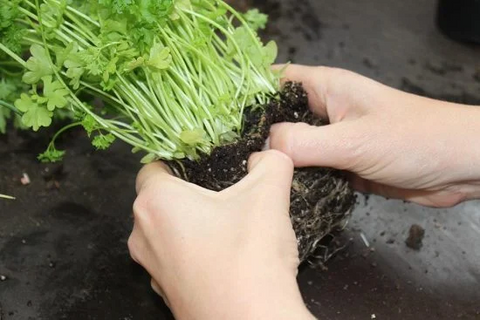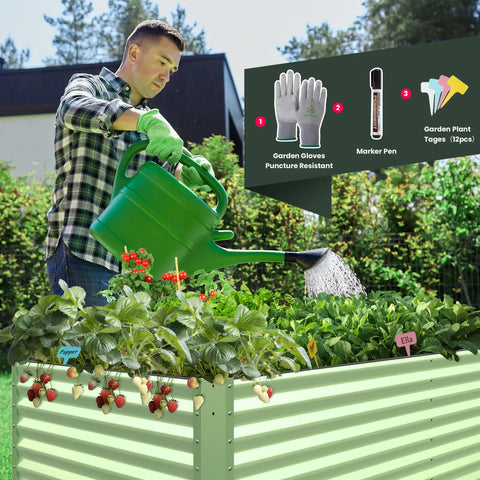Bees play a crucial role in pollinating plants, which is essential for the growth of flowers, fruits, and vegetables. However, in recent years, there has been a decrease in bee populations due to various factors. To help support these important pollinators and create a thriving, bee-friendly garden, you can consider building your own beehive and selecting the right plantings. In this blog post, we'll guide you through the process of establishing a bee-friendly garden with a DIY beehive and carefully chosen plantings.

Why Bee-Friendly Gardens Matter
Bee-friendly gardens not only benefit the environment but also offer several advantages to gardeners and communities. Here's why they matter:
- Pollination: Bees are one of the most beneficial pollinators. A bee-friendly garden ensures the successful pollination of plants, leading to healthier and more abundant crops.
- Biodiversity: A garden that attracts bees also supports a diverse range of pollinators and beneficial insects, contributing to a balanced and thriving ecosystem.
- Aesthetic Appeal: Bee-friendly gardens are often vibrant and colorful, creating beautiful and visually pleasing landscapes.
- Educational Opportunities: Such gardens can be educational for both adults and children, fostering an understanding of the importance of bees and pollinators in our ecosystem.

Part 1: Creating a DIY Beehive
1. Safety Precautions
Before embarking on this project, it's crucial to prioritize safety. Beekeeping can be a rewarding hobby, but it's essential to protect yourself. Invest in a beekeeping suit, gloves, and a veil to prevent stings. Additionally, make sure you're not allergic to bee stings and have the necessary medical supplies on hand in case of an allergic reaction.
2. Selecting the Hive Style
There are various beehive styles to choose from, but Langstroth hives are one of the most popular and user-friendly options for beginners. They consist of boxes with removable frames, making it easier to manage and inspect the hive.
3. Building or Purchasing the Hive
You can either build the hive yourself using readily available plans or purchase a pre-made hive. If you're constructing your hive, you'll need basic woodworking skills, tools, and materials like wooden boards, nails, and paint.
4. Assembling the Hive Components
A Langstroth hive typically consists of a bottom board, boxes (with frames), inner and outer covers, and a hive stand. Assemble these components according to the hive's design. Make sure to paint the exterior of the hive with non-toxic paint to protect it from the elements.
5. Adding Bees to the Hive
Once your beehive is ready, you'll need to acquire a colony of bees. You can either purchase a package of bees with a queen or capture a swarm if you have experience. Installing bees in the hive requires care and precision, as it's a crucial step in establishing your hive.
6. Hive Management
Maintaining a beehive involves periodic inspections, feeding the bees when necessary, and monitoring for signs of disease or pests. It's essential to educate yourself on beekeeping practices and join a local beekeeping association or club for support and guidance.

Part 2: Selecting Bee-Friendly Plantings
1. Native Plants
Choose native plants that are well-suited to your region. Native plants have evolved alongside local pollinators and are often more attractive and beneficial to them. Research native wildflowers, shrubs, and trees that are known to attract bees in your area.
2. Variety and Succession
Plant a range of flowers that bloom at various times during the growing season. Bees need food sources from early spring to late fall. Incorporating a succession of blooming plants ensures a consistent food supply for the bees.
3. Pollinator Favorites
Certain flowers are particularly attractive to bees. Some popular bee-friendly choices include lavender, salvia, bee balm, coneflowers, and sunflowers. Herbs like thyme, oregano, and rosemary are also excellent choices.
4. Avoid Chemicals
Avoid using pesticides, herbicides, or any chemical fertilizers in your garden. These chemicals can harm both bees and their food sources. Instead, opt for organic gardening practices.
5. Water Sources
Provide a source of water for the bees, such as a shallow dish with rocks for them to land on. Bees need water not only for hydration but also to regulate the temperature and humidity within the hive.
6. Shelter and Nesting Sites
In addition to plantings, consider providing shelter and nesting sites for native solitary bees. These can include bee houses or simply leaving undisturbed patches of the garden for ground-nesting bees.

Part 3: Maintaining Your Bee-Friendly Garden
1. Regular Maintenance
Regularly inspect your garden for any signs of disease, pests, or stress in the bee colony. If issues arise, consult with experienced beekeepers for guidance.
2. Seasonal Adjustments
Make seasonal adjustments to your garden. In the spring, ensure there are enough early bloomers to provide food for emerging bees. In the fall, plant late-blooming flowers to sustain the colony through winter.
3. Educate Yourself
Continuously educate yourself about beekeeping and pollinator-friendly gardening. Attend workshops, read books, and learn from experienced beekeepers and gardeners.
4. Share the Knowledge
Share your knowledge and passion for bee-friendly gardening with your community. Encourage others to create their own pollinator-friendly gardens and hives.
Conclusion
Creating a bee-friendly garden with a DIY beehive and carefully selected plantings is a rewarding and environmentally conscious endeavor. Not only will you support bee populations and contribute to local biodiversity, but you'll also enjoy the beauty of a vibrant and flourishing garden. Beekeeping and pollinator-friendly gardening are fulfilling hobbies that enable you to make a positive impact on your local ecosystem while enjoying the wonders of nature up close.









